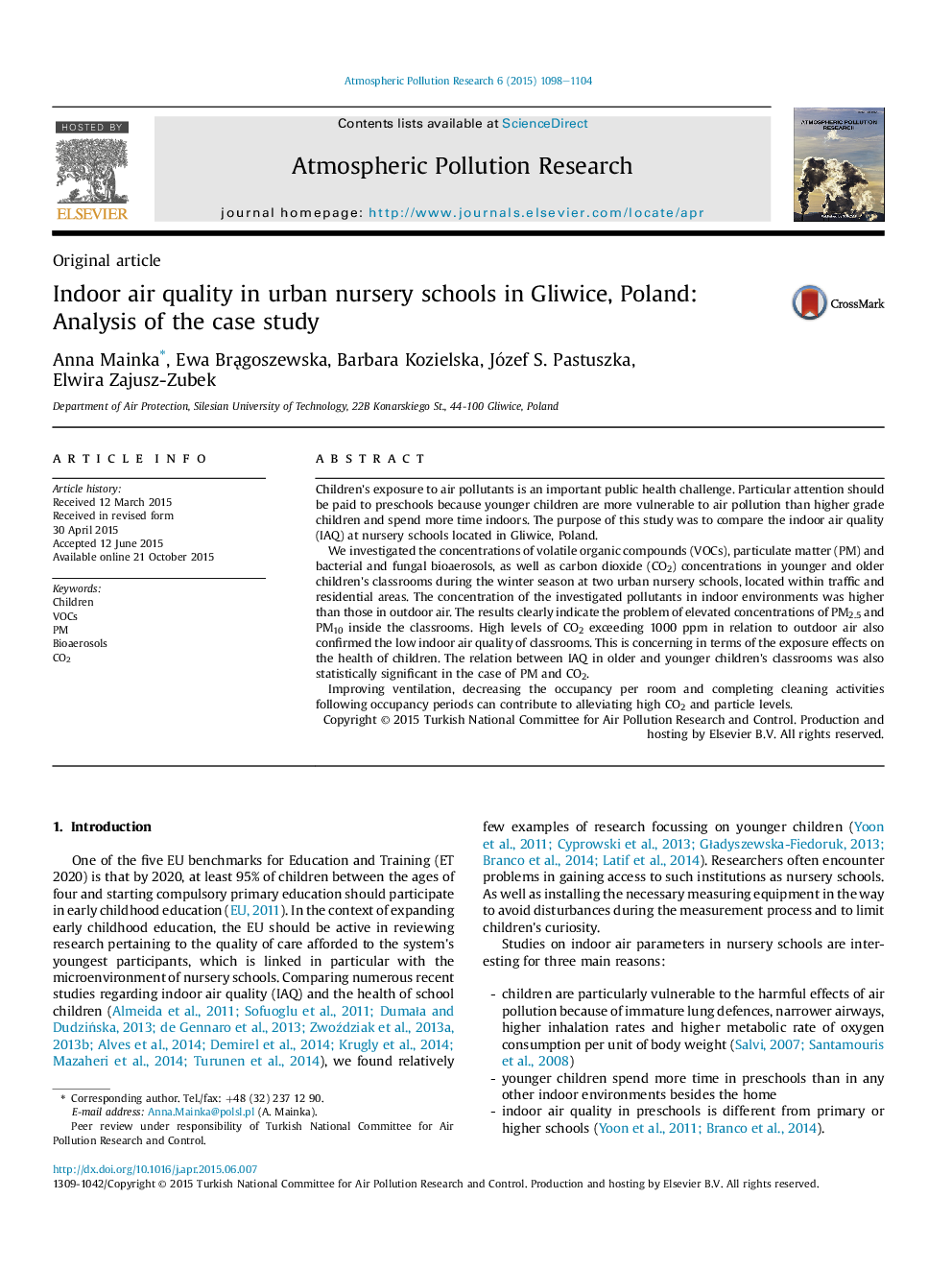| Article ID | Journal | Published Year | Pages | File Type |
|---|---|---|---|---|
| 4434664 | Atmospheric Pollution Research | 2015 | 7 Pages |
Children's exposure to air pollutants is an important public health challenge. Particular attention should be paid to preschools because younger children are more vulnerable to air pollution than higher grade children and spend more time indoors. The purpose of this study was to compare the indoor air quality (IAQ) at nursery schools located in Gliwice, Poland.We investigated the concentrations of volatile organic compounds (VOCs), particulate matter (PM) and bacterial and fungal bioaerosols, as well as carbon dioxide (CO2) concentrations in younger and older children's classrooms during the winter season at two urban nursery schools, located within traffic and residential areas. The concentration of the investigated pollutants in indoor environments was higher than those in outdoor air. The results clearly indicate the problem of elevated concentrations of PM2.5 and PM10 inside the classrooms. High levels of CO2 exceeding 1000 ppm in relation to outdoor air also confirmed the low indoor air quality of classrooms. This is concerning in terms of the exposure effects on the health of children. The relation between IAQ in older and younger children's classrooms was also statistically significant in the case of PM and CO2.Improving ventilation, decreasing the occupancy per room and completing cleaning activities following occupancy periods can contribute to alleviating high CO2 and particle levels.
